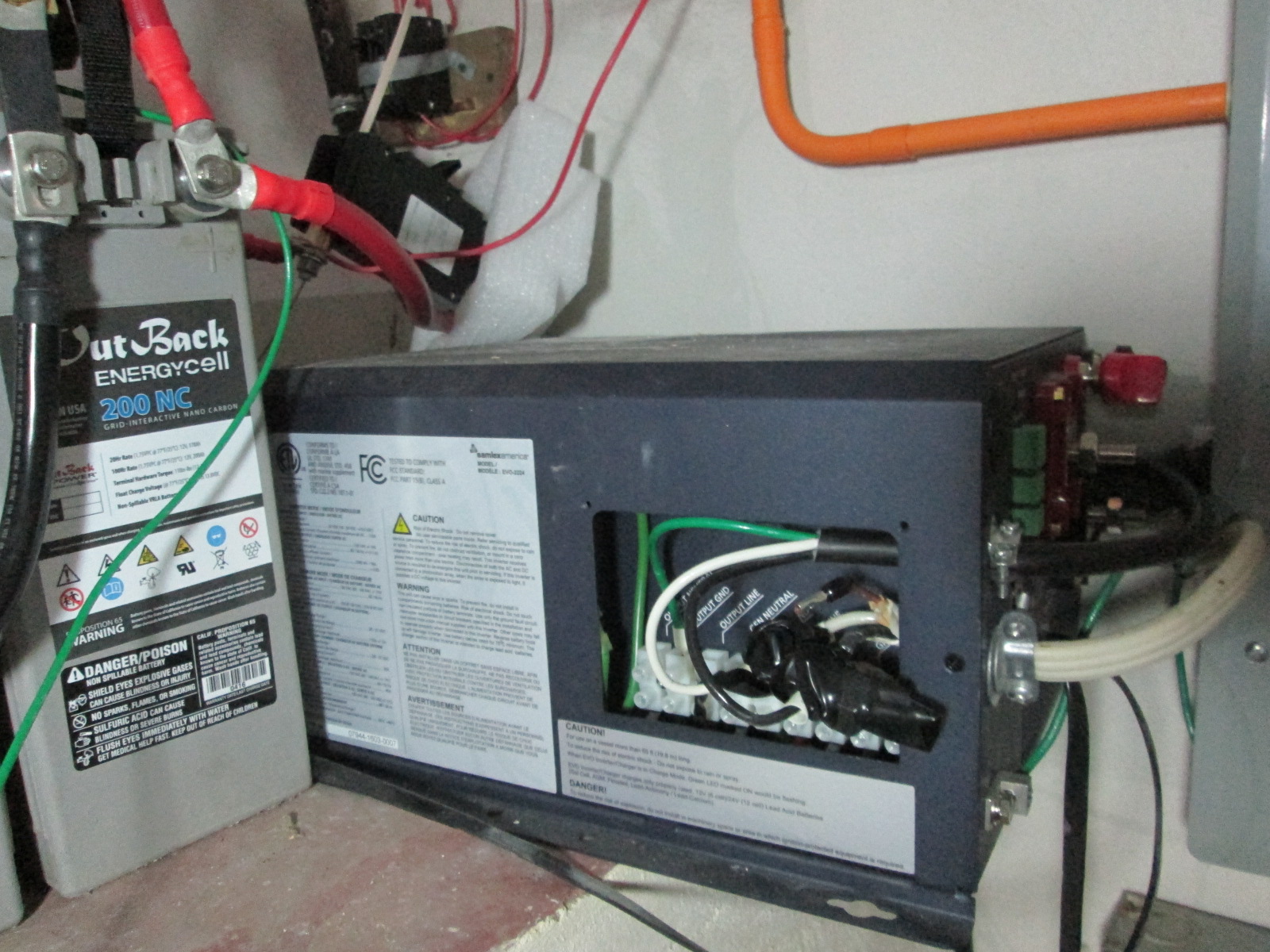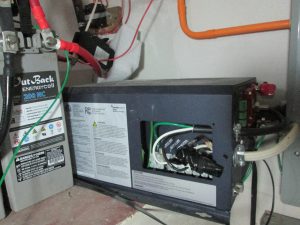
 The system has been working great so this post is a bit more on the details and a bit more about how it works. The photo is of the Samlex EVO-2224 inverter/charger which is the secret to the success of the system.
The system has been working great so this post is a bit more on the details and a bit more about how it works. The photo is of the Samlex EVO-2224 inverter/charger which is the secret to the success of the system.
Clearly it is not all of the system but it is the one component that makes the system do what I want. Other other pieces (PV panels, MPPT charge controller, batteries, breakers, …) are just pretty standard. Now, I specifically picked all the other components carefully and for specific reasons but there are generally lots of alternatives.
The Samlex is, well, special.
You can read more about it at https://www.altestore.com/store/inverters/off-grid-inverters/2000-to-2999-watts/samlex-evo-2200w-24v-pure-sine-wave-invertercharger-p11913/ which is where I bought it. This is only a plug for the AltE store to the extent that I have bought from them multiple times and they have been fine to deal with.
The Samlex has two AC inputs — one for the electric grid and one for a generator — and a DC input for an external charger, output of a PV controller or whatever. It has zillions of programming options and is perfect for a boat installation or any other “complicated” situation. Rather than cover all the options, let me explain what I wanted and how it does this.
What I wanted was a UPS for computer equipment and a few other items. Beyond that, I wanted to use the PV power as the default and only switch to the grid power when the batteries got low enought that I felt they should be recharged. When that happened I wanted to charge them but not necessarily in a hurry. That is, I wanted to be able to pick the recharge rate. Now, here is what I did.
- I put the unit in what is called on-line mode. That basically means the load will be running of the inverter (and, thus, the batteries) most of the time. With the PV panels charging the batteries, during normal weather the unit will never switch to inverter/charger mode. (Note that today is not normal — a tropical storm passed across Belize into southern Mexico and we have the tail of that storm so heavy overcast and lots of rain.)
- You can set the maximum battery charge current in the EVO. As it knows how much current is coming from the PV controller, it steps back its charger current so that the maximum is the PV input minus what you set in the EVO. (The PV system can still charge according its capabilities but, if it gets to the max rate set in the EVO the EVO will not add any charge current.
That’s about it. The only problem I had was that with the EVO absorption charge voltage set the same as the PV controller, the PV system would shut down because the max voltage was reached. The solution was to set the EVO a bit lower and all works perfect.